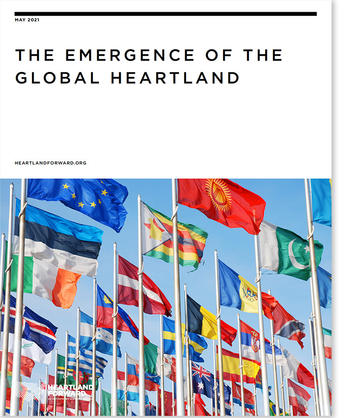
A major shift in the demographic evolution of America is occurring, largely out of sight in the national media, but profoundly affecting communities throughout the Heartland.
The 20 state region, which extends between the Appalachians and the Rockies, has for generations been largely unaffected by the massive movement of people from abroad that has so dramatically transformed the great metropolitan regions of coastal America.
In the national media, the Heartland represented a region, as the New York Times described it, as ’not far from forsaken,’ a depopulating place where the American dream has come and gone. Others have seen the region as an unreconstructed mecca for intolerance, one that had few immigrants and poor race relations and seems destined to suffer for it. As one professor at Vanderbilt suggested recently, the region was “dying from whiteness” and that its “politics of racial resentment is killing America’s heartland.”
Perhaps it is time to change that narrative. Over the past decade, the Heartland’s share of the foreign-born population has risen from 23.5 percent in 2010 to 31.1 percent in 2019. This shift can be seen in many Heartland communities, some such as Louisville, Columbus and Nashville, have seen their immigrant populations swell more than 40 percent from 2010 to 2019, often helping to reverse generations of demographic decline. They are now growing their foreign-born populations faster than such historic immigrant hubs as New York, Los Angeles, San Francisco, Boston and Philadelphia.
The reasons include many factors also seen in our previous studies on entrepreneurs and millennials; lower costs, economic growth and better access to good schools. Perhaps the most underappreciated may be the spirit of friendliness that has been cited by the vast majority of the people we interviewed. For people who have migrated great distances, and sometimes at personal risk, the reception in the Heartland—sometimes described as a hotbed of nativist and xenophobic attitudes—often instead has been both warm and inspiring.
“Each immigrant comes with different potential and dreams,” observes Ahmed Elkhady, a half Palestinian, half Egyptian resident in Cedar Rapids, Iowa, known as the Motorcycle Imam, who works with underprivileged children. “I have big hope in this first migrant generation. They come with unique perspectives from all over the world. They come to grow in a new place they get to help create.” This shift in migration is good not only for the Heartland but also for the nation. Spreading new talent to areas that need it, it also takes the pressure off already overcrowded areas. For too long, essentially since the 1970s, the Heartland, with the notable exception of Texas, was on the sidelines in the nation’s demographic transition, leaving a large part of the country facing much slower population growth and rapid aging. It is on the sidelines no longer.
Download the full report here (PDF).
This piece and the report first appeared at Heartland Forward. Joel Kotkin, Mark Schill, Karla López del Río, Wendell Cox, Alicia Kurimska, and Celia López del Río authored the report.
Heartland Forward is a non-partisan organization that seeks to improve economic performance in the center of the United States by advocating for fact-based solutions to foster job creation, knowledge-based and inclusive growth. Learn more at HeartlandForward.org.
Image credit: Heartland Forward, from the report












